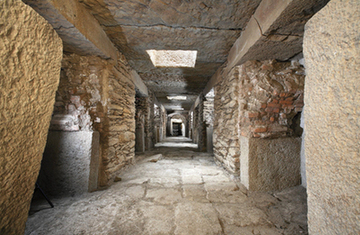
Source: Archaeology:
A publication of the Archaeological Institute of America
Of Obelisks and Empire
By Mark Rose
Photographs by Chester Higgins, Jr.
Royal monuments and ancient accounts recall the lost
glory of an African kingdom
In the first century A.D., an unknown merchant recorded details of the Red Sea trade, and mentioned Adulis, the harbor of “the city of the people called Aksumites” to which “all the ivory is brought from the country beyond the Nile.” The ruler of Aksum, he wrote, was Zoskales, who was “miserly in his ways and always striving for more, but otherwise upright, and acquainted with Greek literature.” Just two centuries later, the philosopher Mani (ca. A.D. 210-276) included Aksum as one of the four great empires, along with Rome, Persia, and Sileos (possibly China). And in 274, envoys from Aksum took part in the triumphal procession staged by the emperor Aurelian when he paraded the captured Queen Zenobia of Palmyra, fettered with gold chains, through Rome.
Today, Aksum is a dusty, regional market town of about 50,000 in northern Ethiopia. If people have heard of it, perhaps it is on account of another queen: the Biblical Sheba. According to the Kebra Nagast (Book of the Glory of the Kings), an early-14th-century compilation that chronicles Ethiopia’s rulers, Solomon and Sheba had a son, Menelik, who brought the Ark of the Covenant from Jerusalem to Aksum. The Ethiopian Orthodox Church maintains that the Ark is still kept within the precinct walls of the Church of Tsion (Mary of Zion) in Aksum. Read more.
Related: Embracing Ethiopia By CHESTER HIGGINS
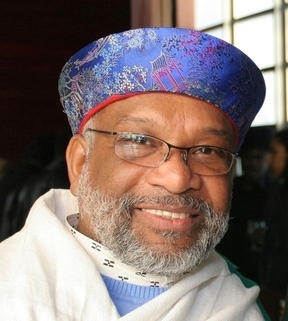
Chester Higgins, Jr.
Tadias Magazine
By Chester Higgins, Jr.
Photo Updated: April 21st, 2009
New York (Tadias) – Long before I set foot in Ethiopia, the name itself summoned images of Biblical proportion for me and, I believe, for many other African Americans as well. In the Bible, ‘Ethiopia’ is a place of refuge, an amazing mystical land.
Then with the advent of Marcus Garvey and African nationalists, who rallied against the Italian invasion of Ethiopia during the Second World War, Ethiopia became a symbol of resistance to Colonialism. In the 1960s, when Emperor Haile Selassie appeared on national TV during a state visit to the US, millions more African American imaginations burned with the knowledge of an independent African people.
Not until the 1970s did the image and concept of Ethiopia, inspired by the reggae music of Bob Marley, gain extraordinary prominence in the minds of a young generation of African Americans. The Rastafarian Movement’s efforts to re-define the sanctity of Ethiopia and re-cast Emperor Selassie in a sacred light caught the imagination of young people as they swayed to reggae music. A new light had come out of Africa, but the beam started in the diaspora, this time in Jamaica.
In 1969 I had the good fortune to make a portrait of the renowned Harlem historian and teacher Dr. John Henrik Clarke. He was deeply committed to Africa and African people. My young mind was a parched field, and the many hours I spent with him, asking questions and hearing his answers, fertilized and watered that dry soil. Through him, my knowledge and understanding of Ethiopia grew. Dr. Clarke had this effect on thousands of Harlem residents and on students at Hunter College and Cornell University.
In 1973, on my first journey to Ethiopia, I attended the tenth anniversary conference of the Organization of African Unity (OAU), now called the African Union (AU). That year the conference was held in Addis Ababa. I came to photograph African heads of state; I wanted to share with African Americans my view of rulers responsible for African people.

Above: Emperor Haile Selassie (1973).
Photo by Chester Higgins.
For me the most significant ruler, the most interesting leader, turned out to be Emperor Haile Selassie. In my new book, Echo of the Spirit: A Photographer’s Journey (Doubleday 2004), I write: “…As I waited at the Addis Ababa airport for a glimpse of arriving dignitaries, my attention was pulled from the action around the arriving airplanes to a group of men making their way across the tarmac. I could sense the power of one man in particular before I could even see him.” Although he was of such small stature that he was dwarfed by the others alongside him, something about his aura so profoundly moved me that I lowered the camera so I could see him with both eyes. Only after he passed me did I learn that I had been in the presence of His Majesty Haile Selassie, the Emperor of Ethiopia.
Returning from that trip, I began to seek out Ethiopian students at Ethiopian restaurants and conferences to discuss my experience, encountering a mixed reception and political discontent. The students were receptive to my interest in their country, although none shared my enthusiasm for the emperor. Through the many students I have met over the years, I have discovered informative books and begun attending the Horn of Africa Conference, held annually at the City College of New York.
In July 1992, I returned to Ethiopia with my son Damani as my photography assistant. As I wrote in my book Feeling the Spirit: Searching the World for the People of Africa (1994), “The memory of being in his [Emperor Haile Selassie I] presence has remained an inspiration in my personal life. Damani, who has locked his hair, shares my love of His Majesty and reggae, the music of the Rastafarians who worship Selassie.”
So far I have been to Ethiopia about a dozen times. On each visit, I use my camera to make a record of contemporary and ancient Ethiopia. Spending weeks at a time, I have traveled in the North to the cities of Mekele, Gondar, Lalibela, Aksum, Bahir Dar, Dessie and Yeha. In the South, I have recorded sites and ceremonies in Nazareth, Debra Ziet, Awassa, Tiya and Tutafella.
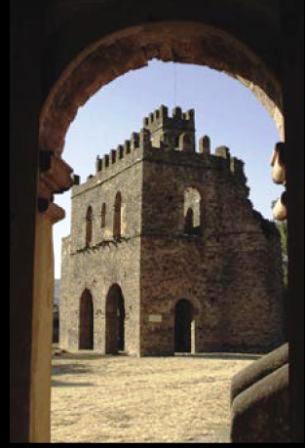
Above: Fasilides Castle. Photo by Chester Higgins.
Ethiopia is indeed home to the earliest humans. In the National Museum in Addis are the bones of Dinquinesh, or Lucy, dating back almost 4 million years. In Aksum, I have seen the monumental mains of tombs and obelisks from earliest kingdoms. Also in Aksum, in 1000 BCE, Makeda, Queen of Sheba, turned away from the old faith of the Nile River cultures — the worship of the Sun that climaxed as the ancient Egyptian religion — and embraced the faith of the Hebrews. Here, too, Emperor Ezana converted to Christianity in 324 CE. The richness of the historic and photographic appeal of Ethiopia is revealed for me especially in the ancient monolithic stone churches of Lalibela and the more ancient Moon Temple in Yeha.
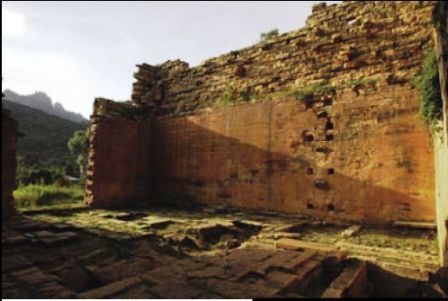
Above: Yeha Temple. Photo by Chester Higgins.
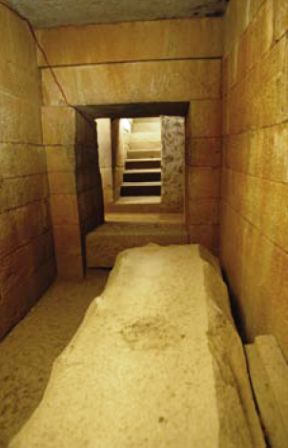
Above: Axum Tomb. Photo by Chester Higgins.
Today, Ethiopian people stand tall and proud, their feet planted securely on the land of their fathers and under the sky of their mothers. Ethiopians work hard, believe hard, and are driven hard to persevere by the vicissitudes of nature and life.
It has been a pleasure getting to know Ethiopia and her people.
–
Learn more about Chester Higgins at:chesterhiggins.com


























A very interesting article.
I have only been to Ethiopia twice. I married an Ethiopian lady last year, and hope to have a traditional wedding party in Addis Ababa later this year. My wife really wants to visit the marvelous historical sites of Aksum and Lalibela, as she has never been able to afford to go and see them. I’m also interested in historical sites so it will be a wonderful trip for us both.
Yes, a lost glory of an African Empire but, I see a new and brighter future for the country is just around the corner. Lets wait and see. Rgds.
Malcolm Pickup.
Resident in Bahrain.
The first who step foot in the cultural heritage of Ethiopia were the cushites (as we know historically; which means nothing is for sure, but when you talk about history, this is its historical fact), which came from Egypt (sons of noah-al-cusiya) thru Sudan along the Nile to the northern borders (only) of alpine Ethiopia. It is possible today, seeing were the cushites have settled first.
Also when Ethiopia is mentioned in the bible, it was never a reference to the current Ethiopia of today, It always referred to south of Egypt, which meant cush and nubia not going deeper than meroe and napata. the king of aksum destroyed nubia, and it was a Jewish axumite king ( ezana) who went to yemen to kill several Christians there (martyrs of narjan!!!). also, it was the sabeans who established aksum, which was completely sabean at early times, never African. I think in the 5th century, Yemen became ethiopia but only for a few years, after the Persians took all of Arabia.
Chakra,
History is history buddy. You can’t change it just because you don’t like it. Read, read, read, my friend.
yea whatever, i dont think you have studied history like me, i didnt study or read, buddy, i went to the places and read the in scripts there, from armenia to kenia, for years and centuries, so dont tell me about reading history, i go there to see history, not read in a book. too much history huh? Show me one point in my post which is not true (with facts).
chakra it is not making an informed statment egypt was first settled by people who came from the mountains following the nile (from the south)not noahs boy coming from the north.and the nubians came from west africa later on.as for ezana destroying christians is not true he was the first christian convert in ethiopia in 324 ad he went in to yemen in defence of jews who were prosecuted.about the the bible ethiopia is mentioned the land surounded by three rivers meroe the capital of nubia and also nubia is north of khartum where the white& blue niles meet.the bible also says is the location of eden.But above all dna test shows ethiopians have the ancient gene.History is always skewed towards those who write it that is why you can not take what you see and hear on you little vacation as the only truth.do not hate.